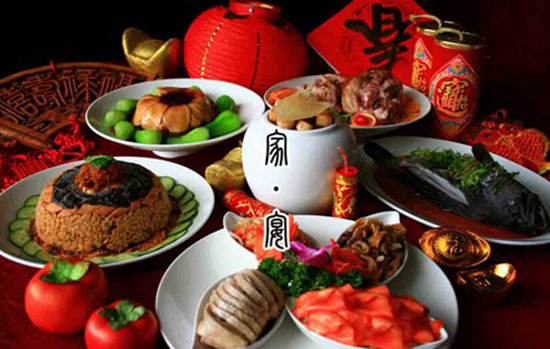 |
|
[Photo/People's Daily Online] |
During the Spring Festival holiday, which has recently wrapped up for 2019, people enjoy not only reuniting with family, but also tasting delicious foods from their hometowns. These delicacies are deeply rooted in the memory of generations of individuals in China. The fact that these holiday foods bring together families during a festive time of year underscores their significance in people's lives.
'Nothing could be more delicious than dumplings'
 |
|
Dumplings. [Photo/People's Daily Online] |
Dumplings, with a history of nearly 2,000 years, are one of the most representative and widely popular traditional foods in China. An old saying in China states that "nothing could be more delicious than dumplings".
Dumplings are indispensable on Chinese New Year's Eve dinner tables, especially in the north. The food is usually made before noon on New Year's Eve and eaten at midnight. That's because this time is the beginning of the first lunar month, which exemplifies the "happy reunion" of the transition between the new year and the old year. People will also put coins or nuts inside to make "fortune dumplings", which symbolize good luck in the new year.
Sweet dumplings: Yuanxiao versus tangyuan
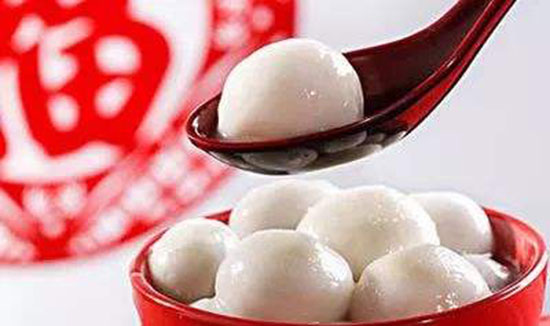 |
|
Sweet Dumplings. [Photo/People's Daily Online] |
The custom of eating sweet dumplings on Lantern Festival was first recorded in the Song Dynasty (960-1279). At that time, Mingzhou -- known today as Ningbo, Zhejiang province -- created a new variety of food. The people stuffed dough made of glutinous rice flour with various fruit-flavored fillings, rolled them into balls, and then boiled them in a pot.
On the 15th day of the first lunar month, people in northern China eat yuanxiao and those in the south eat tangyuan. What's the difference between the two? In places such as Jiangsu and Zhejiang provinces in East China, the dumplings are rolled by hand using moist flour, stuffed with more filling, and slightly thinner in terms of dough. In areas such as Beijing in the north of China, yuanxiao have drier flour and more of it as well as less filling. Eating sweet dumplings in Spring Festival represents happiness and reunion.
New Year cake
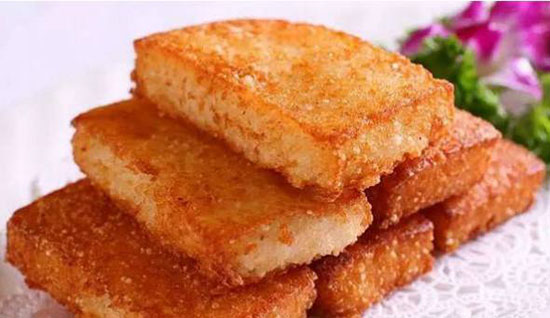 |
|
New Year cake. [Photo/People's Daily Online] |
During Spring Festival, many people eat New Year cake, which symbolizes the idea that life is improving year by year. So New Year cake, also called rice cake, is not only a traditional festival food, but also reflects a positive aspiration.
People say New Year cake was initially used as a sacrifice for ancestors and gods at the very beginning, and then gradually became part of the typical cuisine for Spring Festival. Today, you can find the food in a variety of colors and shapes.
Spring rolls
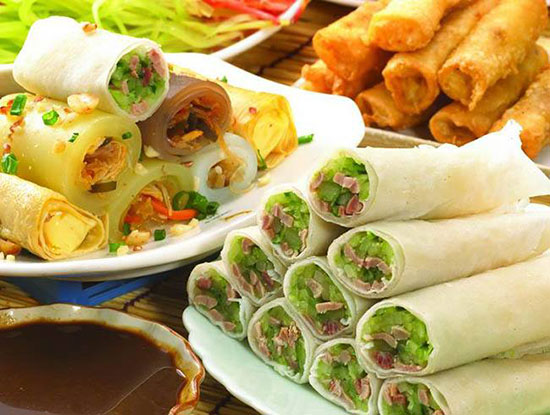 |
|
Spring rolls. [Photo/People's Daily Online] |
Spring rolls, which represent good wishes for the new year, are traditionally served at the beginning of Spring Festival and, in some areas in the south, take the place of dumplings.
The food, made by adding cabbage and minced or diced meat to flour-based pancakes shaped into a roll, sees different variations in different regions of China. For example, spring rolls include roast duck in Beijing, but roast goose in Guangdong.
Other Spring Festival foods
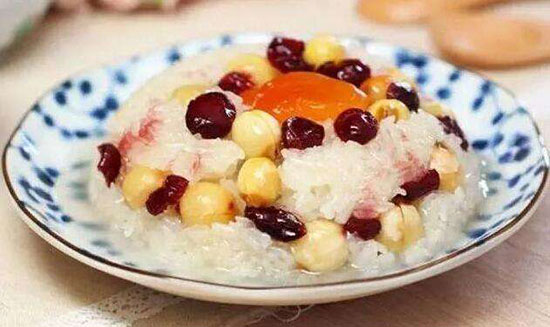 |
|
Babaofan. [Photo/People's Daily Online] |
Eight-treasure rice, or babaofan in Chinese,an indispensable food for the traditional New Year's Eve dinner for people in Shanghai, symbolizes reunion, good fortune and health.
On the 20th day of the last month in the lunar calendar, people of the Tujia ethnic group living in West Hunan Province always make glutinous rice cakes, a food that Hakka people also frequently have on the table during the festival.
People in Guangxi enjoy eating rice dumplings, which are also called zongzi, during Spring Festival, either buying them or preparing them at home.
Fu Rui contributed to this story

Presented by Chinadaily.com.cn Registration Number: 10023870-7
Copyright © Ministry of Culture, P.R.China. All rights reserved